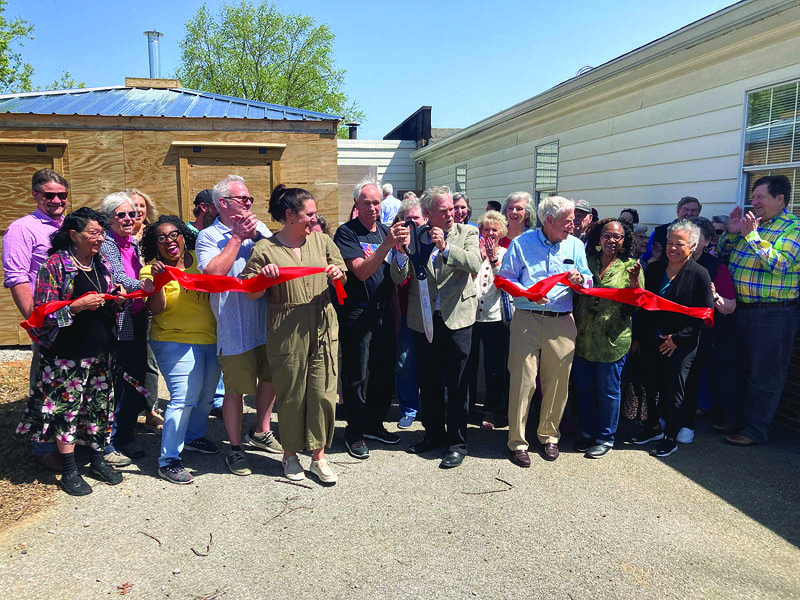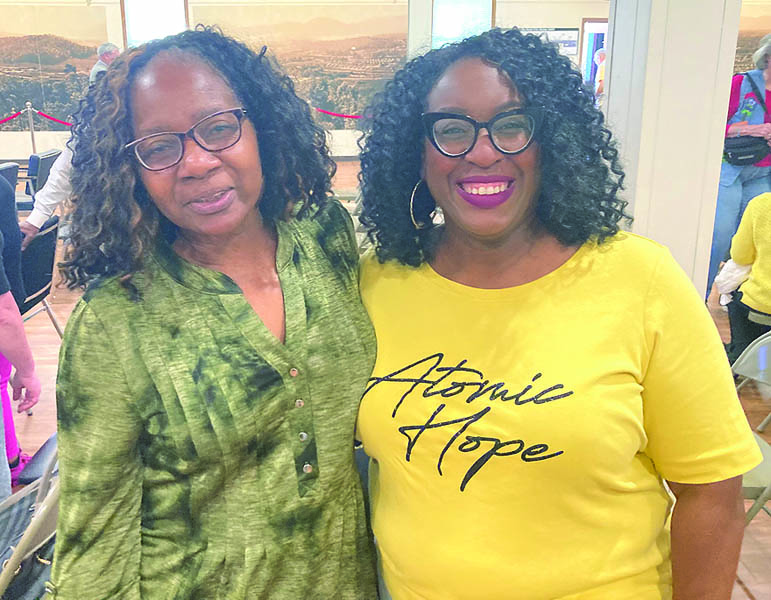‘Life’ during World War II
Hutment at Oak Ridge History Museum depicts how it was
During World War II, all of Oak Ridge’s African-American residents and some white ones lived in tiny, crowded hutments.
A replica of one such hutment now stands at the Oak Ridge History Museum at 102 Robertsville Road.
A ribbon cutting was held at 1 p.m. Saturday, April 1.
The hutment, a one-room unpainted wooden structure, has several beds with army blankets, a stove, clothing and other period items.
During World War II, four or five people lived in these 16-by-16-foot hutments, and the rent was 20 cents per day.
Oak Ridge historian Rose Weaver spoke at the ribbon-cutting event. She said it was important to have physical structures people could visit to learn history instead of just depending on books.
“Especially for our students, they’re visual; they want to able to touch something and see what it’s like,” she said, referring to the ability to see and stand in the hutment at the museum. “That is ideal, unique education.”
Also speaking at the event was Don Hunnicutt, tour guide coordinator for the Oak Ridge History Museum. He did a phone interview with the Courier News as well.
“This particular hutment is showing the people how the African-American people lived here,” he said. Hunicutt is the son-in-law of Ed Westcott, a photographer who recorded Oak Ridge’s early history, including the hutments.
Hunicutt spoke of the importance of all of the Manhattan Project workers regardless of race in ending World War II through their work on the atomic bomb.
“They played a vital role no matter what their job was,” he said. “In my opinion, they were heroes.”
Mike Stallo, a history expert who works with the Oak Ridge Public Library, also spoke both at the ribbon cutting and in an interview.
Hunnicutt and Stallo said different areas of hutments, a type of quick makeshift housing, existed in Oak Ridge.
One, for white construction workers, was near present-day A.K. Bissell Park.
Another, for African American residents, was near the present-day Woodland community.
Stallo explained that the Woodland hutments had the name Scarboro Village, but the more-permanent African-American community in Gamble Valley named Scarboro came later. Another set of hutments for people working on building K-25 was in Happy Valley near the plant site, Oak Ridge historian D. Ray Smith told the Courier News.
Museum display information shared by Hunnicutt explained that while some white people lived in hutments during World War II, they were the only option for African-Americans in Oak Ridge.
“The money was good, but the facilities were pretty bad,” Hunicutt said with regard to the conditions for the African-American workers.
“The African-American workers came here mostly from the South,” he said. “Everyone who came here working on the project made more money than where they came from.”
“Hutments were minimal housing units providing only the most-basic essential needs of their occupants,” the museum display states.
The hutments lacked insulation, the museum’s display says. In the early years of the hutments, coal stoves like the one at the museum’s replica provided heat, although Hunnicutt said kerosene stoves later replaced the coal ones.
The hutments did have electricity, but no plumbing. Instead, the residents used bathhouses in their hutment communities.
World War II Oak Ridge was highly segregated, the signs state, with separate communities and businesses for African-American and white residents. Also, the African-Americans could not live with children or spouses. African-American men and women lived in different areas with fencing and guards between them.
Hunnicutt explained that the hutment at the Oak Ridge History Museum is more durable and built more to current codes than the earlier, temporary hutments.
The recreated hutment was not funded by the city of Oak Ridge, but by various sponsors.
Sponsors include ESG Construction, LLC; Oak Ridge Nuclear Care Partners; Wulff Architects Inc.; Lynn Cardwell a structural engineer in Oak Ridge; and Oak Ridge High School Class of 1967.



